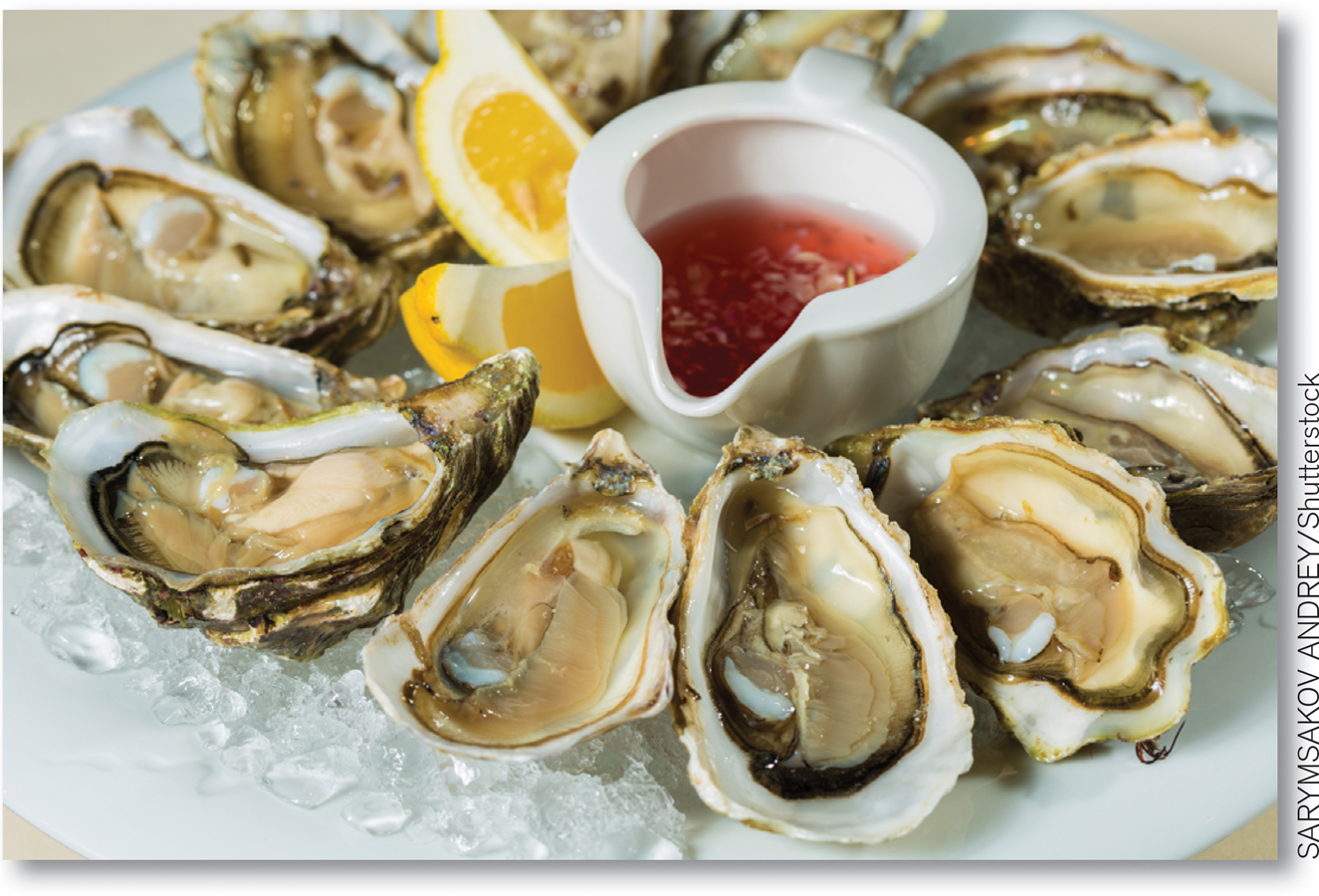The Principle of Diminishing Marginal Utility
The marginal utility of a good or service is the change in total utility generated by consuming one additional unit of that good or service. The marginal utility curve shows how marginal utility depends on the quantity of a good or service consumed.
In addition to showing how Cassie’s total utility depends on the number of clams she consumes, the table in Figure 10-1 also shows the marginal utility generated by consuming each additional clam—
The marginal utility curve slopes downward: each successive clam adds less to total utility than the previous clam. This is reflected in the table: marginal utility falls from a high of 15 utils for the first clam consumed to −1 for the ninth clam consumed. The fact that the ninth clam has negative marginal utility means that consuming it actually reduces total utility. (Restaurants that offer all-
FOR INQUIRING MINDS: Is Marginal Utility Really Diminishing?
Are all goods really subject to diminishing marginal utility? Of course not; there are a number of goods for which, at least over some range, marginal utility is surely increasing.
For example, there are goods that require some experience to enjoy. The first time you do it, downhill skiing involves a lot more fear than enjoyment—
Another example would be goods that only deliver positive utility if you buy enough. The great Victorian economist Alfred Marshall, who more or less invented the supply and demand model, gave the example of wallpaper: buying only enough to do half a room is worse than useless. If you need two rolls of wallpaper to finish a room, the marginal utility of the second roll is larger than the marginal utility of the first roll.
So why does it make sense to assume diminishing marginal utility? For one thing, most goods don’t suffer from these qualifications: nobody needs to learn to like ice cream. Also, although most people don’t ski and some people don’t drink coffee, those who do ski or drink coffee do enough of it that the marginal utility of one more ski run or one more cup is less than that of the last. So in the relevant range of consumption, marginal utility is still diminishing.
Not all marginal utility curves eventually become negative. But it is generally accepted that marginal utility curves do slope downward—
According to the principle of diminishing marginal utility, each successive unit of a good or service consumed adds less to total utility than the previous unit.
The basic idea behind the principle of diminishing marginal utility is that the additional satisfaction a consumer gets from one more unit of a good or service declines as the amount of that good or service consumed rises. Or, to put it slightly differently, the more of a good or service you consume, the closer you are to being satiated—
The principle of diminishing marginal utility isn’t always true. But it is true in the great majority of cases, enough to serve as a foundation for our analysis of consumer behavior.
ECONOMICS in Action: Oysters versus Chicken
Oysters versus Chicken
Is a particular food a special treat, something you consume on I special occasions? Or is it an ordinary, take-

Consider chicken. Modern Americans eat a lot of chicken, so much that they regard it as nothing special. Yet this was not always the case. Traditionally chicken was a luxury dish because chickens were expensive to raise. Restaurant menus from two centuries ago show chicken dishes as the most expensive items listed. As recently as 1928, Herbert Hoover ran for president on the slogan “A chicken in every pot,” a promise to voters of great prosperity if he was elected.
What changed the status of chicken was the emergence of new, technologically advanced methods for raising and processing the birds. These methods made chicken abundant, cheap, and also—
The reverse evolution took place for oysters. Not everyone likes oysters or, for that matter, has ever tried them—
Yet oysters were once very cheap and abundant—
What changed? Pollution, which destroyed many oyster beds, greatly reduced the supply, while human population growth greatly increased the demand. As a result, thanks to the principle of diminishing marginal utility, oysters went from being a common food, regarded as nothing special, to being a highly prized luxury good.
Quick Review
Utility is a measure of a consumer’s satisfaction from consumption, expressed in units of utils. Consumers try to maximize their utility. A consumer’s utility function shows the relationship between the consumption bundle and the total utility it generates.
To maximize utility, a consumer considers the marginal utility from consuming one more unit of a good or service, illustrated by the marginal utility curve.
In the consumption of most goods and services, and for most people, the principle of diminishing marginal utility holds: each successive unit consumed adds less to total utility than the previous unit.
10-1
Question 10.1
Explain why a rational consumer who has diminishing marginal utility for a good would not consume an additional unit when it generates negative marginal utility, even when that unit is free.
Question 10.2
Marta drinks three cups of coffee a day, for which she has diminishing marginal utility. Which of her three cups generates the greatest increase in total utility? Which generates the least?
Question 10.3
In each of the following cases, determine if the consumer experiences diminishing marginal utility. Explain your answer.
The more Mabel exercises, the more she enjoys each additional visit to the gym.
Although Mei’s classical music collection is huge, her enjoyment from buying another album has not changed as her collection has grown.
When Dexter was a struggling student, his enjoyment from a good restaurant meal was greater than now, when he has them more frequently.
Solutions appear at back of book.